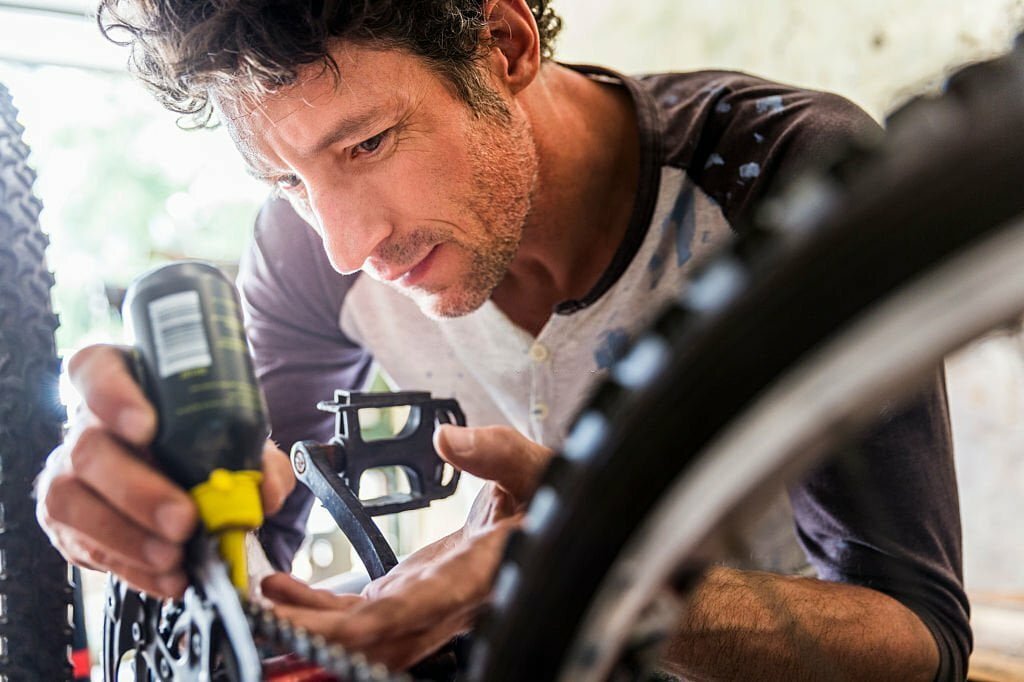Bicycling is not only a fantastic mode of transportation but also a fulfilling hobby. To keep your bike running smoothly and enjoy a comfortable ride, regular maintenance is essential.
One crucial aspect of this maintenance is properly lubricating your bicycle chain. In this comprehensive guide, we will walk you through the steps of how to oil a bicycle chain effectively to ensure a smooth and quiet ride.
Why Lubricate Your Bicycle Chain?
Before delving into the step-by-step process, let's understand why lubricating your bicycle chain is so important. The chain is a vital component of your bike's drivetrain, responsible for transferring power from your pedaling to the wheels.
Without proper lubrication, the chain can wear out faster, create excess noise, and lead to inefficient pedaling. A well-lubricated chain, on the other hand, reduces friction, minimizes wear, and enhances your overall biking experience.

Materials You'll Need To Oil/Grease a Bike Chain
Before you get started, gather the necessary materials:
Bicycle chain lubricant: Choose a lubricant specifically designed for bicycle chains. There are various types available, including wet and dry lubes, so select one that suits your riding conditions.
Clean rags or paper towels: These are essential for cleaning and wiping off excess lubricant.
A bike stand (optional): While not mandatory, a bike stand can make the process more convenient by elevating the bike and allowing you to rotate the pedals freely.
A chain cleaning tool (optional): If your chain is exceptionally dirty, a chain cleaning tool can help you thoroughly clean it before applying new lubricant.
Step 1: Choose the Right Lubricant
Selecting the right lubricant for your chain is crucial. Different lubes are designed for various riding conditions:
Wet lubes: Ideal for wet and rainy conditions as they are water-resistant and provide long-lasting lubrication.
Dry lubes: Suited for dry and dusty conditions as they repel dust and dirt, keeping your chain clean.
All-purpose lubes: These offer a balance between wet and dry lubes and can work well in various conditions.
Consider your local weather and riding conditions when choosing a lubricant.
Step 2: Prepare Your Workspace
Find a well-ventilated area, preferably outdoors, to work on your bike. If you have a bike stand, use it to elevate your bicycle. Having the bike at a comfortable working height will make the process more manageable.

Step 3: Clean the Chain (Optional)
If your chain is visibly dirty or covered in grime, consider cleaning it before applying new lubricant. A clean chain ensures that the lubricant adheres effectively.
You can use a chain cleaning tool or a clean rag soaked in a degreaser to wipe down the chain. Rotate the pedals backward while holding the rag against the chain to remove dirt and old lubricant.
Step 4: Position the Chain
To ensure thorough lubrication, shift your bike into the smallest chainring at the front and the smallest cog at the rear. This configuration minimizes tension in the chain, making it easier to access all parts for lubrication.

Step 5: Apply the Lubricant
Now comes the critical step—applying the lubricant. Hold the lubricant bottle close to the chain but avoid touching it. Squeeze the bottle gently to release a drop of lubricant onto each chain link as you slowly rotate the pedals backward. Continue applying lubricant along the entire length of the chain to ensure even coverage.
Step 6: Allow the Lubricant to Settle
After applying the lubricant, give it a few minutes to penetrate the chain's rollers and pins. This settling time ensures that the lubricant spreads evenly and reaches all the moving parts.

Step 7: Wipe Off Excess Lubricant
Using a clean rag or paper towel, carefully wipe off any excess lubricant from the chain. Excess lubricant can attract dirt and grime, leading to a messy and less efficient chain.
Step 8: Shift Through the Gears
To distribute the lubricant evenly, shift through all the gears while pedaling for a minute or two. This action helps work the lubricant into the chain's links and provides a smoother gear transition.
Step 9: Test Ride
Before hitting the road, take your bicycle for a short test ride around your neighborhood or a nearby parking lot. Pay attention to how the chain feels. A well-lubricated chain should run quietly and smoothly. If you notice any unusual noises or experience chain skipping, you may need to reapply the lubricant or perform additional maintenance.
Step 10: Establish a Maintenance Schedule
Proper chain maintenance is an ongoing process. Depending on your riding frequency and conditions, you should aim to oil your bicycle chain every 100-200 miles or more frequently if you often ride in wet or muddy environments. Regular maintenance will not only keep your chain in excellent condition but also extend the lifespan of your bike's drivetrain components.
Conclusion
Knowing how to oil a bicycle chain is a fundamental skill for any cyclist. By following these steps and maintaining your chain regularly, you'll enjoy smoother rides, reduced noise, and increased pedaling efficiency.
Furthermore, your bike's drivetrain components will last longer, ensuring a more enjoyable and cost-effective biking experience. Happy cycling!
